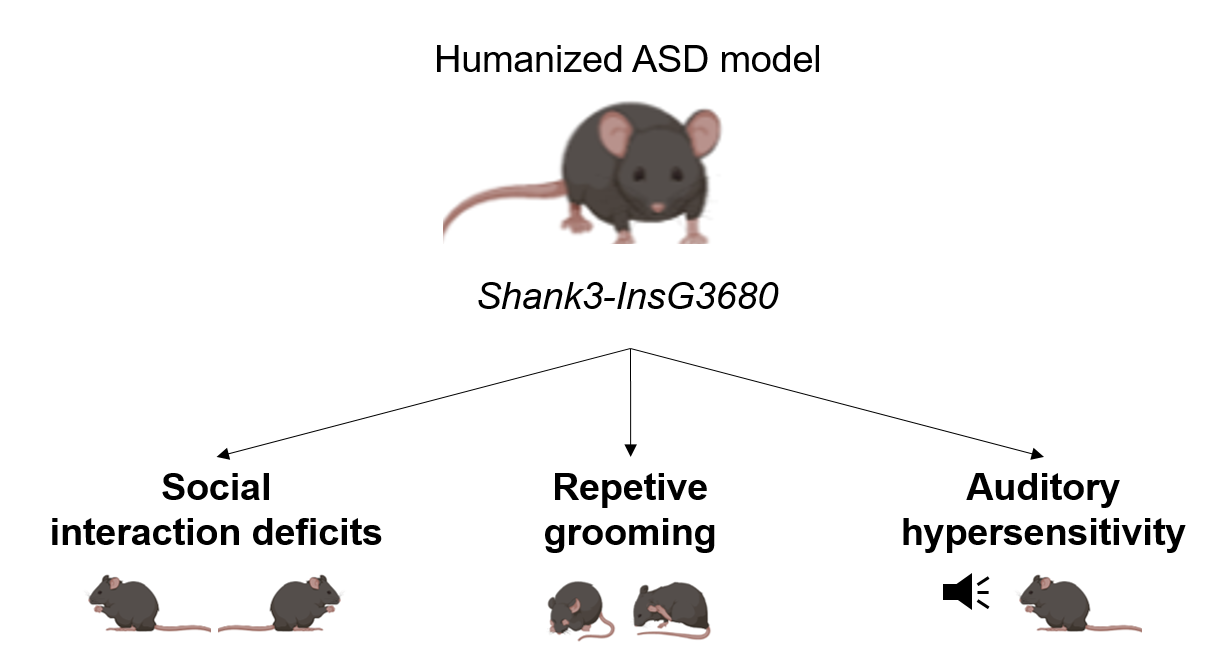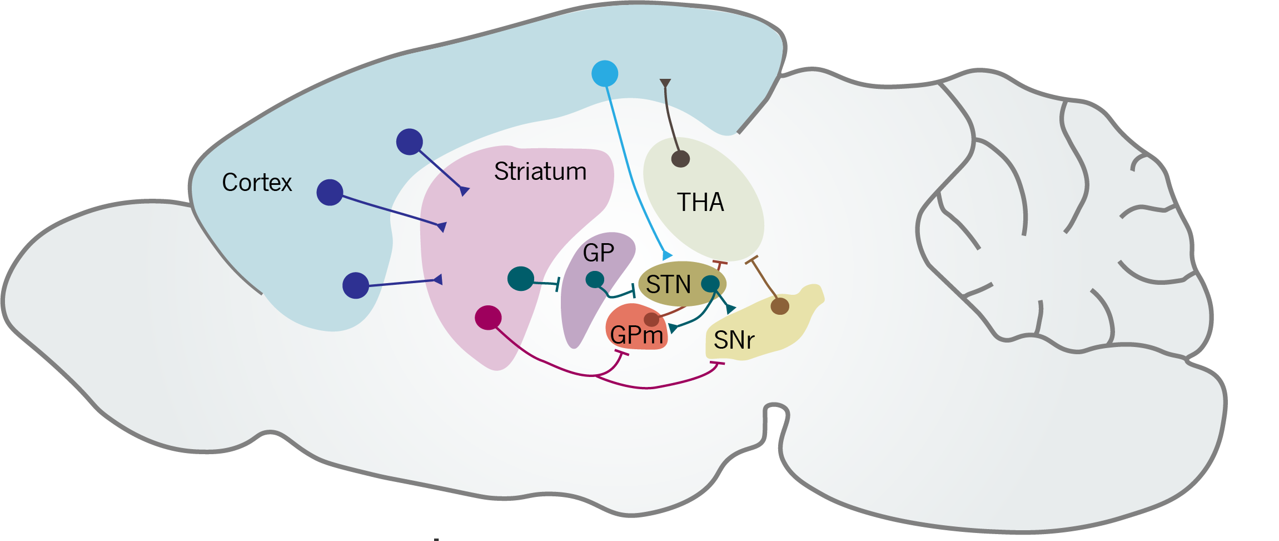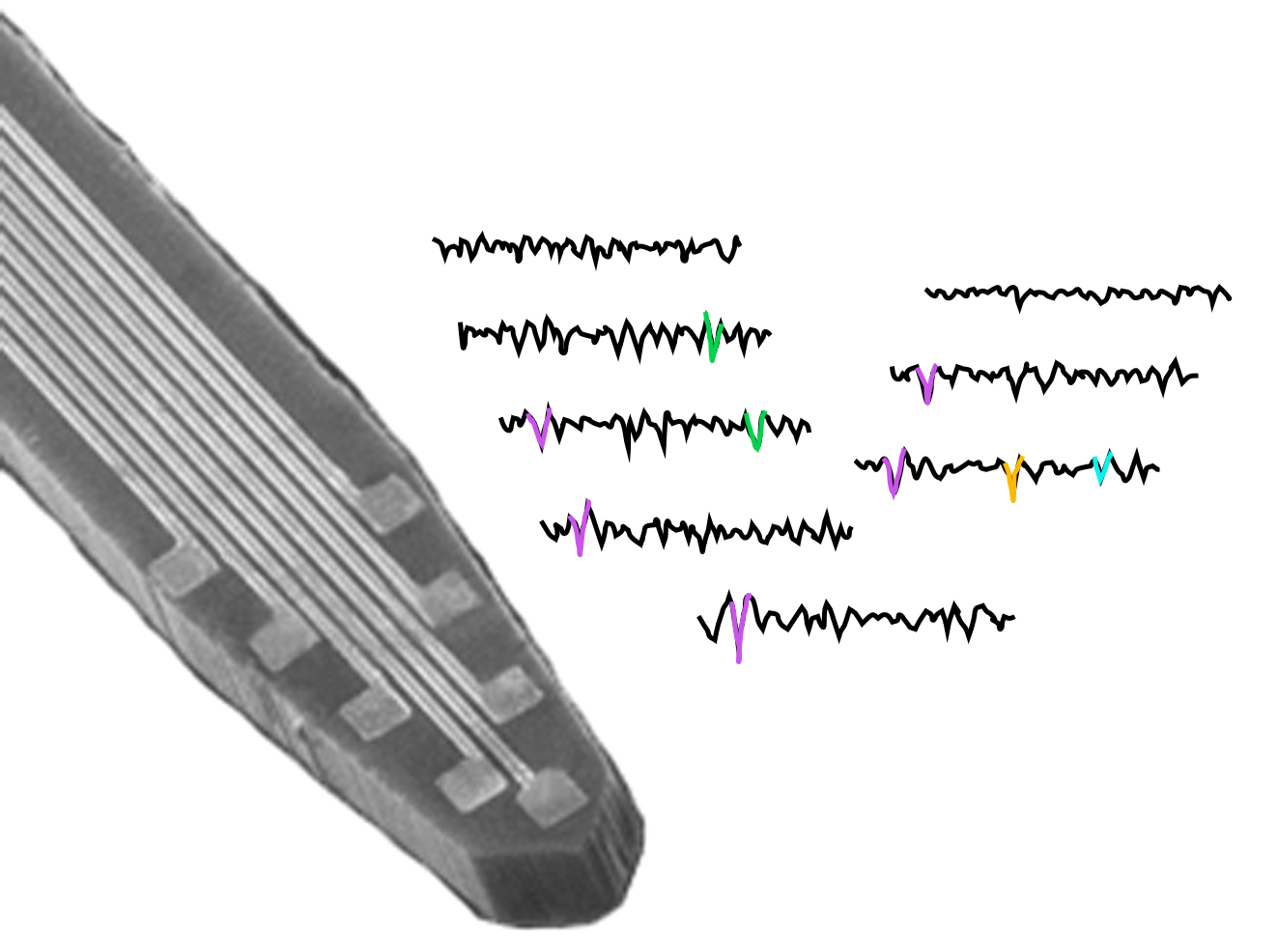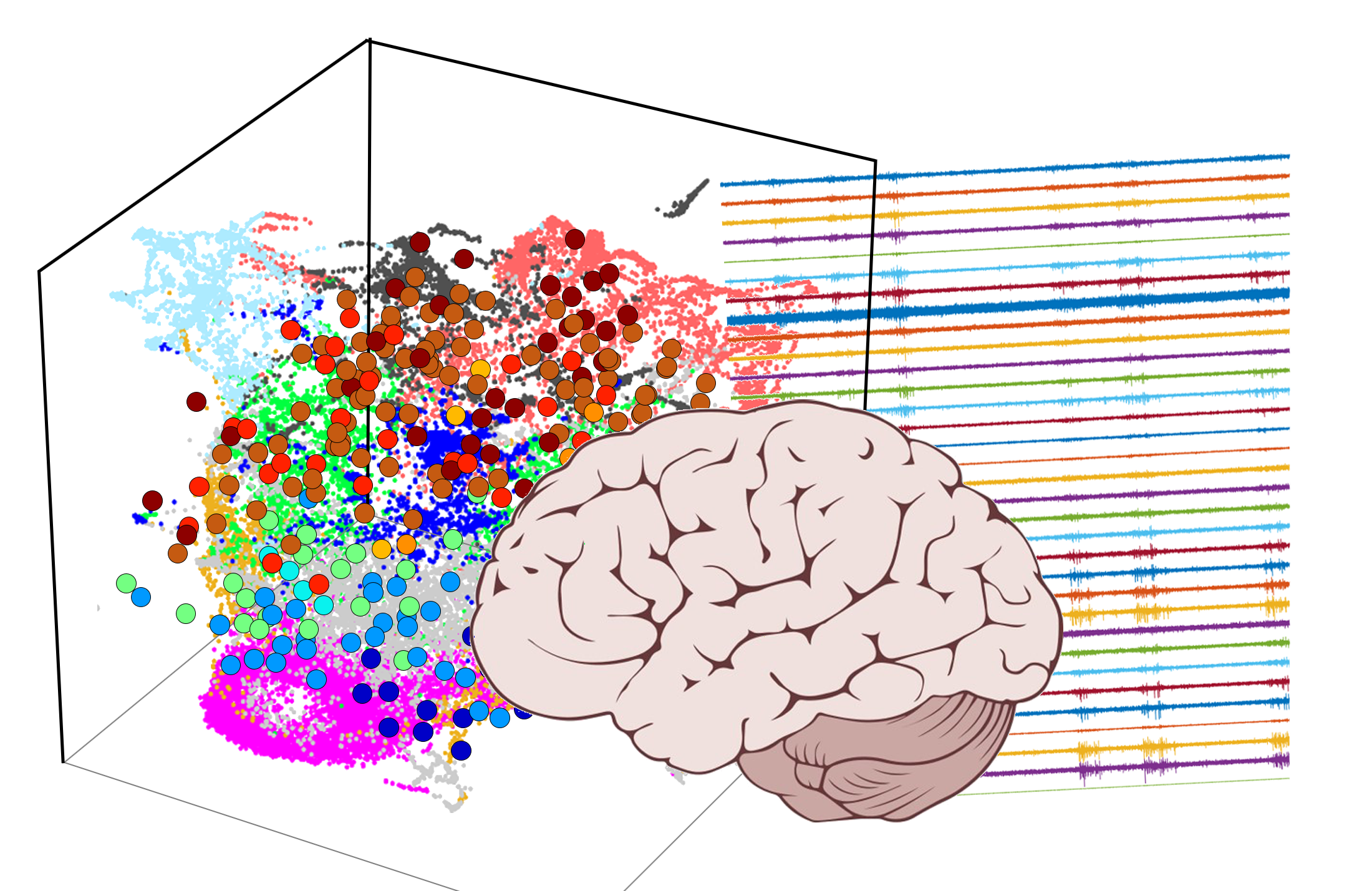Research
We study how cortico-basal ganglia-thalamo circuits encode and decode information and how disruption of these circuits can lead to brain disorders such as autism spectrum disorders (ASD) and obsessive-compulsive disorder (OCD). Simultaneously, we also develop new technologies with translational potential to monitor and modulate brain activity, and for diagnostics/therapeutics in brain disorders.
NEUROPHYSIOLOGY
To understand how cellular and synaptic mechanisms interact within neural circuits to control behavior, we combine ideas from genetics, biochemistry, physics and engineering, with in vivo and ex vivo electrophysiology techniques, closed-looped brain implants, and other state-of-the-art approaches to study brain circuits in transgenic mouse models of neuropsychiatric and neurodevelopmental disorders.

Neurobiological mechanisms underlying autism spectrum disorders (ASD)
Autism spectrum disorders (ASD) affect nearly 70 million people worldwide. Several large-scale genomic studies have supported an association between cases of autism spectrum disorder and mutations in the human gene SHANK3. Research studies by us and others have been revealing the biological extent to which mutations in Shank3 can impact brain function and development in zebrafish, mice, rats, and even primates, leading to reduced social interaction and repetitive behavioral patterns in all species. We are currently studying cortico-basal ganglia-thalamo circuits in Shank3-mutant mice and how Shank3 mutations impact sensory processing and social behaviors.
Synaptic dysfunction of corticostriatal circuits in neuropsychiatric disorders
The human brain contains 86 billion neurons that are connected to each other through particular structures called synapses. We are interested in understanding how subtle changes in synapses can affect communication between neurons and trigger brain disorders such as obsessive-compulsive disorder (OCD), schizophrenia, and stress/anxiety-related disorders.

NEUROENGINEERING
Understanding complex neural systems at the functional level requires novel advanced tools which can only be created with a profound grasp of neurophysiology. Our interdisciplinary projects bring together researchers and students from biological and engineering sciences to solve complex problems requiring the integration of different fields of knowledge.

Electronic Neural Interfaces
Neural interfaces create a direct communication channel between the brain and external electronic devices. They allow recording and modulation of neural activity and replacing or augmenting brain function. We develop new technologies and devices to interact with the brain including: electrophysiological neural probes, nanobioelectronic neural interfaces, and non-invasive/wireless brain stimulators. We combine our knowledge of neurophysiology and systems neuroscience with engineering approaches such as micro/nano-fabrication, materials engineering, electronics, signal processing, and machine learning to create new tools.
Machine learning and data analysis tools for brain activity decoding and behavioral phenotyping
Recent advances in electronics miniaturization and device integration allow the recording of brain activity with unprecedented resolution. We develop and use machine learning, signal processing, and computational data analysis tools to decode large scale recordings of brain activity. We apply these tools to answer questions in preclinical neuroscience studies but also to identify electrophysiological biomarkers in patients afflicted with brain disorders. We also combine machine learning tools with computer vision to automatically identify behavior profiles in animal models of brain disorders and to understand how these are correlated with alterations in brain activity.
